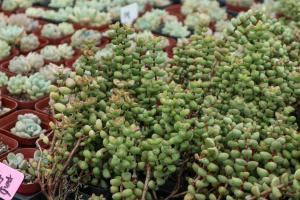When to Start Feeding Tomato Plants in Pots
Tomatoes are a favorite crop for many gardeners, and growing them in pots can be a convenient option for those with limited space. But when it comes to feeding tomato plants in pots, timing is key. Read on to learn when to start feeding your tomato plants and how to do it.
Preparing the Potting Mix
Before you start feeding your tomato plants, make sure that the potting mix is prepared properly. Use a high-quality potting mix that is specifically designed for vegetables. This mix should be well-drained and rich in nutrients.
If the potting mix you are using does not contain any fertilizer, add a slow-release granular fertilizer to the mix during planting. This will provide your plants with a steady supply of nutrients over time. You should also add some compost or well-aged manure to the mix to boost the soil’s fertility.
When to Start Feeding
When it comes to feeding tomato plants in pots, timing is crucial. You do not want to start fertilizing too early or too late. Here are some guidelines to follow:
? Seedlings: If you are starting your tomato plants from seeds, wait until they have developed their first true leaves before feeding them. This usually takes around 2-3 weeks after germination.
? Young plants: Once your seedlings have developed their first true leaves, you can start feeding them once a week with a balanced liquid fertilizer. This will help them to grow strong and healthy.
? Mature plants: Once your tomato plants have reached maturity and have started to produce fruit, you can switch to a fertilizer that is higher in phosphorus and potassium. These nutrients will help to support fruit production and improve the flavor of your tomatoes.
How to Feed Tomato Plants in Pots
Feeding tomato plants in pots is easy and can be done in a few simple steps. Here is what you need to do:
1. Choose a high-quality liquid fertilizer that is appropriate for the stage of growth your plants are in.
2. Dilute the fertilizer according to the instructions on the label.
3. Water your plants thoroughly before applying the fertilizer. This will help to prevent the fertilizer from burning the roots.
4. Pour the diluted fertilizer onto the soil around the base of the plant. Avoid getting any fertilizer on the foliage, as this can cause leaf burn.
5. Repeat the process once a week for young plants and every two weeks for mature plants.
Conclusion
Feeding tomato plants in pots is an important part of their care, and it is essential to get the timing right in order to achieve the best results. By following the guidelines outlined above, you can ensure that your tomato plants receive the nutrients they need to grow strong, healthy, and productive.

 how many times do yo...
how many times do yo... how many planted tre...
how many planted tre... how many pine trees ...
how many pine trees ... how many pecan trees...
how many pecan trees... how many plants comp...
how many plants comp... how many plants can ...
how many plants can ... how many plants and ...
how many plants and ... how many pepper plan...
how many pepper plan...































